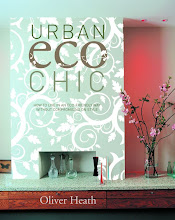 How to set up an eco-friendly home office
How to set up an eco-friendly home office
A home office increases the pressure on your
personal space but also offers environmental
benefits. By using all that technology has to offer, you
can create a more efficient workspace— one
that uses less electricity and other resources,
such as paper. Here's how:
1. Turn off all appliances when you finish for
the day. In some cases, you may need to
unplug them; check the instruction manual or
your dealer
2. Make the most of communication
technologies, such as digital imaging;
conference calling, and broadband, in order to
reduce the need for travel and mailing items.
3. Use recycled paper in your printer;
print on both sides of paper (though you
may need a thicker grade of paper to do this).
4. Keep two wastebaskets—one for ordinary trash and one specifically for paper and
envelopes—this also makes paper easier to reuse, provided you do not crush it up.
5. Recycle your empty printer cartridges
6. Recycle obsolete items of I.T.— look online for charities that will take old computers and printers away for use in schools or developing countries or for local community groups, such as
freecycle. org. If it is totally out of date, contact your local government, who can advise how best to dispose of any items without sending them to landfill.
(From Urban Eco Chic by Oliver Heath from Quadrille Publishing. Used with permission from the publisher. Photo credit: House Beautiful magazine).








